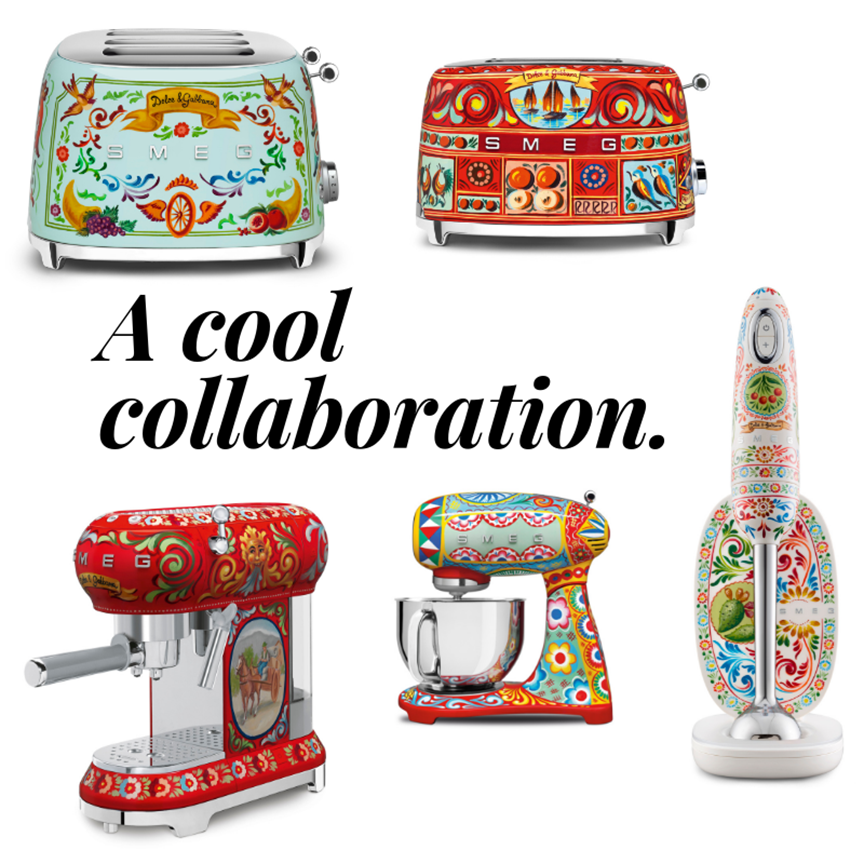Whether you’re purchasing a new home or revamping your existing space, there are many different facets of decor theory to consider. One of the most important decisions to make is which colors you will utilize, a decision that will set the mood for your home. The savviest of designers and homeowners will consider the science of color, and further the psychology behind the way our brains interpret different hues and shades. When selecting a color scheme, it’s wise to understand the way these colors will make us feel. Whether working with shades of passionate red or warm tones of yellow, experts at Arhaus, an interior furnishing company, offer great tips on how to execute knowledge based on color psychology in interior design.
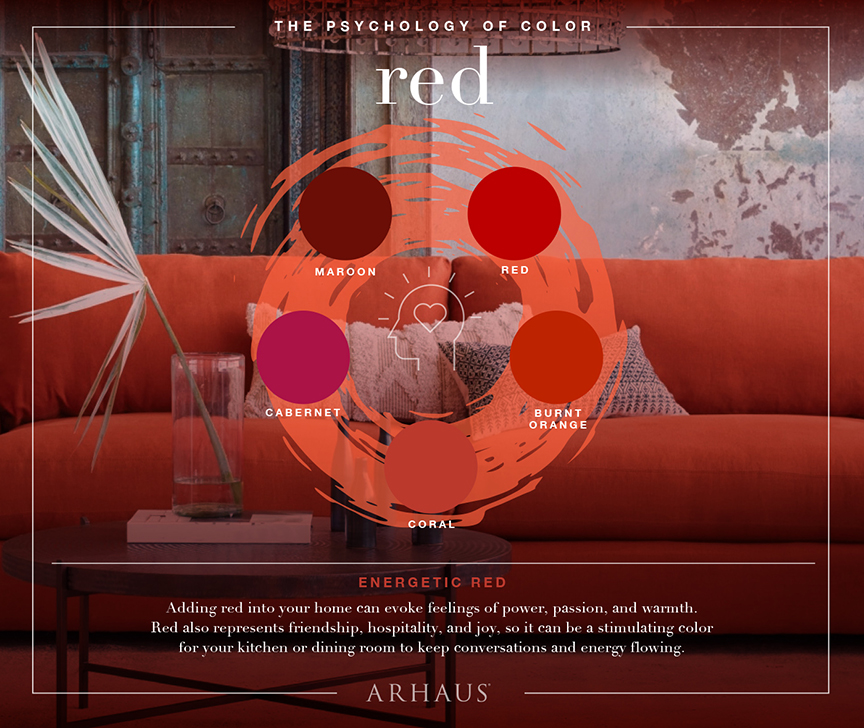
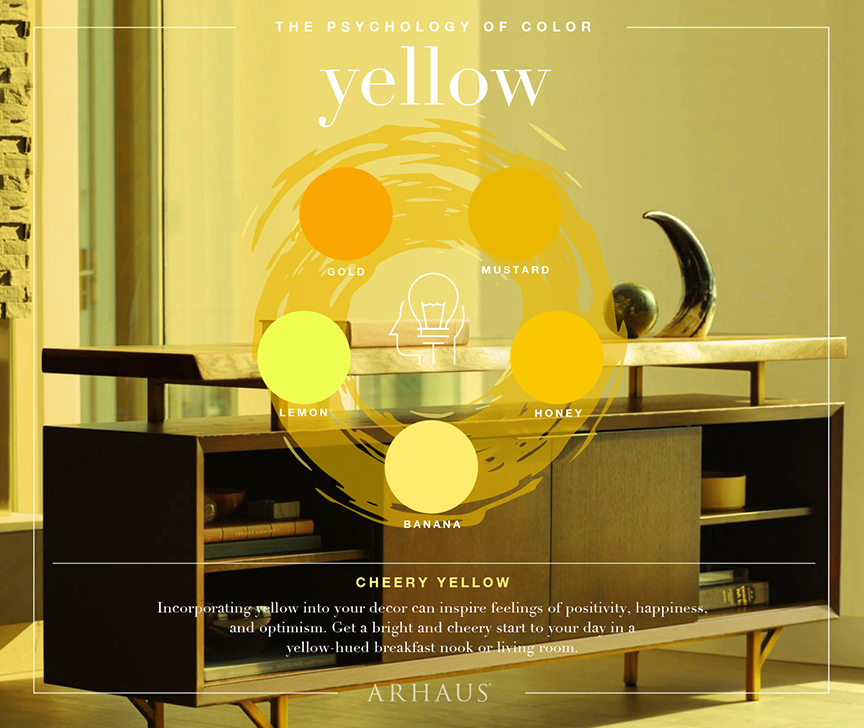
Start With Walls
Rooms with the absence of color, especially stark, white spaces with oppressive lighting, can make us feel uncomfortable. We have definitive reactions to color, especially on a subconscious level, so it is important to factor this in when deciding the layout and color scheme of room. Starting with the walls, try and think about the room’s intended purpose, and decide on paint color from there. Is this going to be a living room where the family relaxes as the long day is winding down? Or perhaps it’s a bedroom with a luxurious view of rolling hills or a coastline?
Due to the way that our brains process color, you will want to select a color that will promote a certain mood. Blues and greens can offer a feeling of relaxation, especially in rich, warmer shades. Blue is especially desirable in the bedroom as it can promote calmness and aid in sleep. Green traditionally is perceived as familial, which can be a great choice for a living room. Adding supplementary furniture, such as a patterned sofa or loveseat, can add to the mood of the room and help it become the ultimate room to spend time with the family.
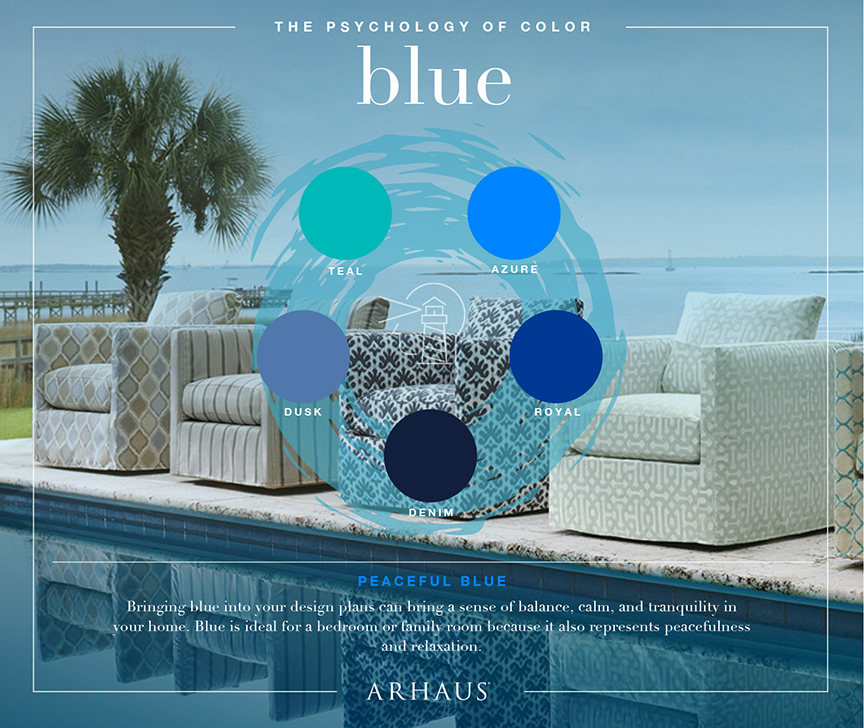
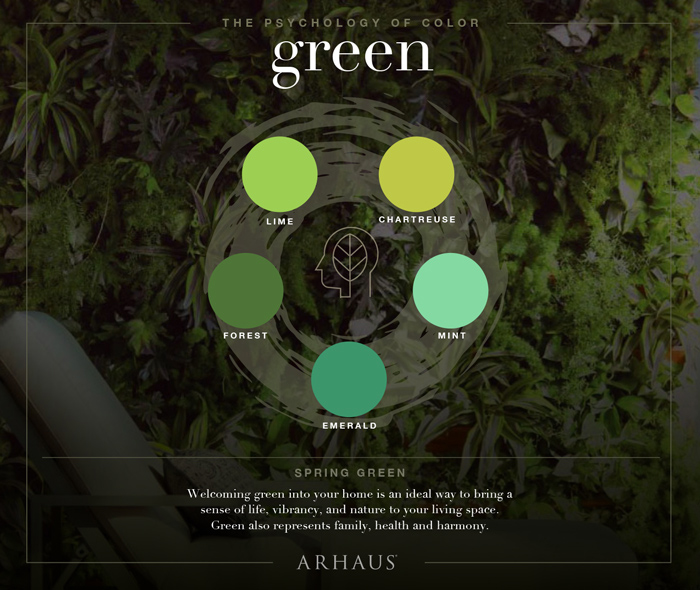
Stock the Room
Surely, a chic and luxurious home will need furnishings; we can’t just live in an empty house! It is important to “stay within the lines” regarding furniture and decorative pieces. If you’re going for a rustic, mountain vibe, an abstract, post-modernist painting surely won’t pull the room together.
We can generally rely on our intuition when it comes to design, and when all else fails, go with pieces that you like! With that said, we must consider each item within the context of color scheme. Neutral colors, like browns, blacks, and grays, can be used to balance a room. Consider a brown or black exterior surface (especially fine cabinet wood), which can help to offset the color profile and bring the room a more subtle, cohesive look. A black bookshelf with matching end tables beside a deep burgundy wall can exude feelings of passion, warmth, and creativity – perfect for a den or a studio.
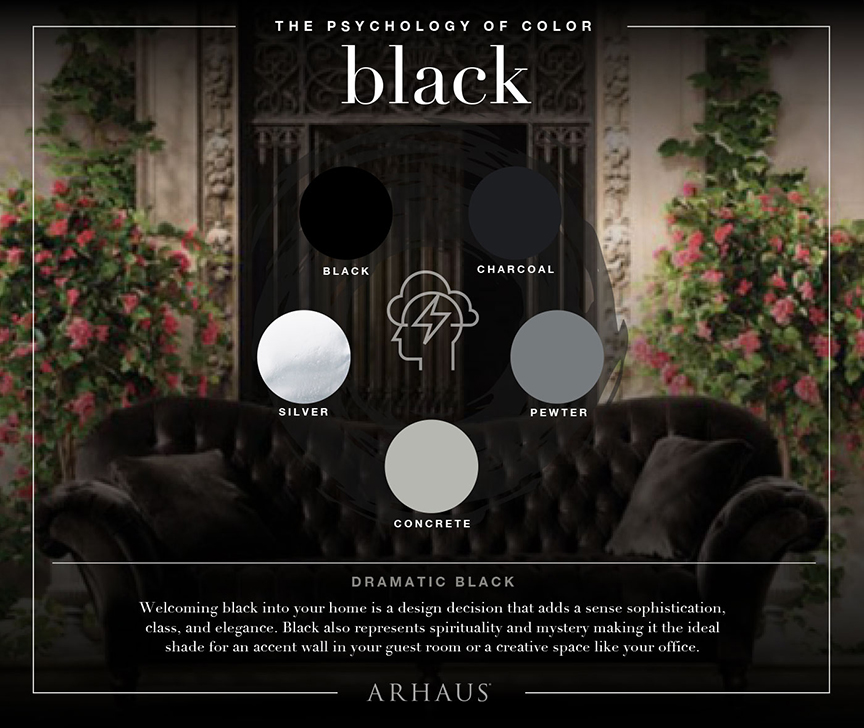
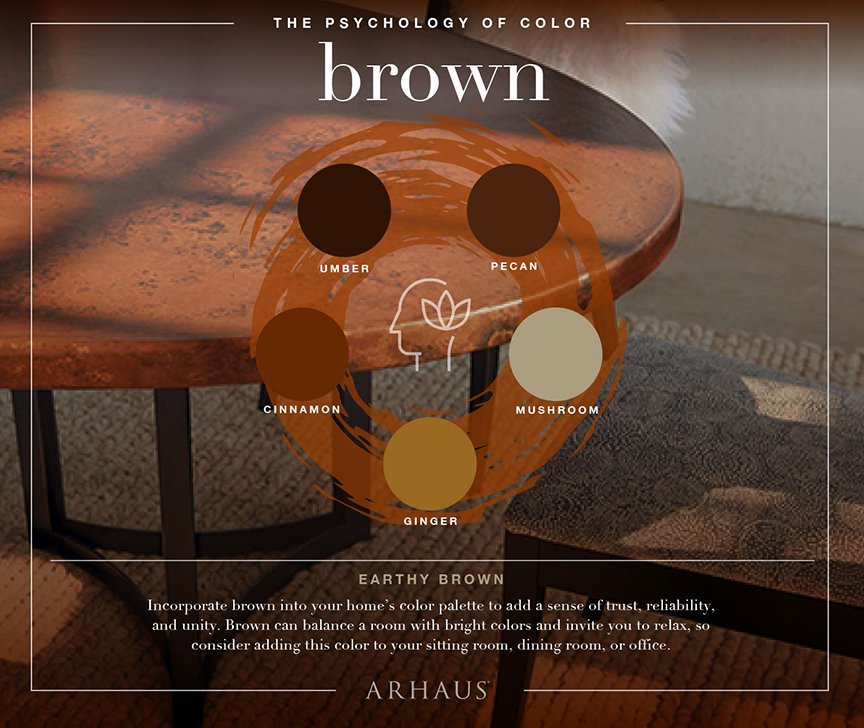
Finishing Touches
Once you’ve got the room essentially put together, with your color scheme well-solidified, it’s time to add the final touches and make it truly your own space. An excellent way to add a personalized element to your home is through old family heirlooms. Now, we’re not talking your grandmother’s prized Waterford crystal china, but an old quilt she made years ago can add a cool, retro feel to a room – while simultaneously honoring your family and heritage.
The same sentiment rings true for artwork, such as paintings or sculptures. A fine piece of art can add an element of sophistication and elegance to any room, but try to avoid heavy contrast between your room’s color scheme and the paintings! Once you’ve personalized your space and implemented colors you love, you will be ready to enjoy it for years to come.
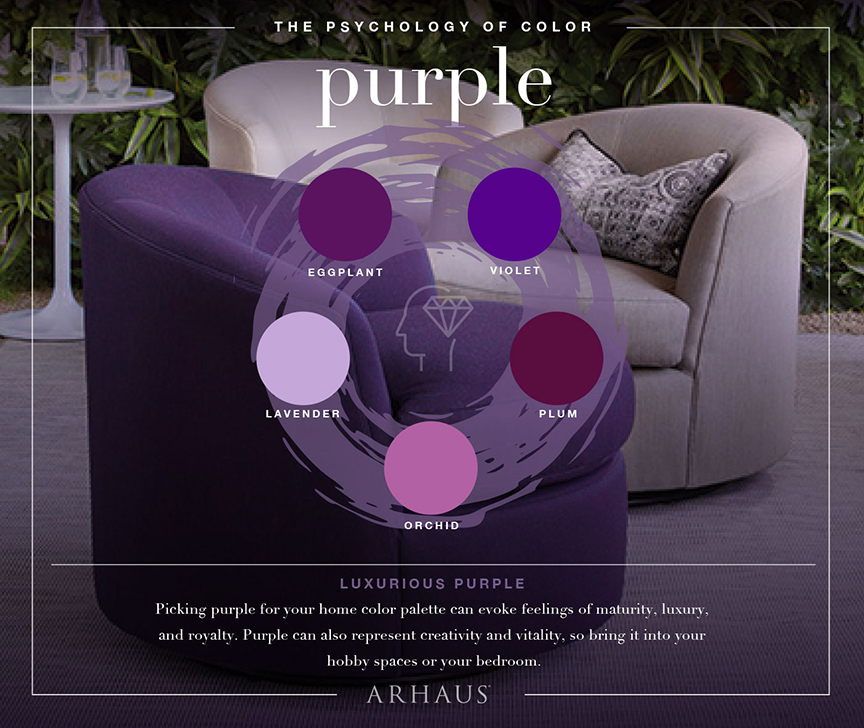
Imagery courtesy Arhaus.
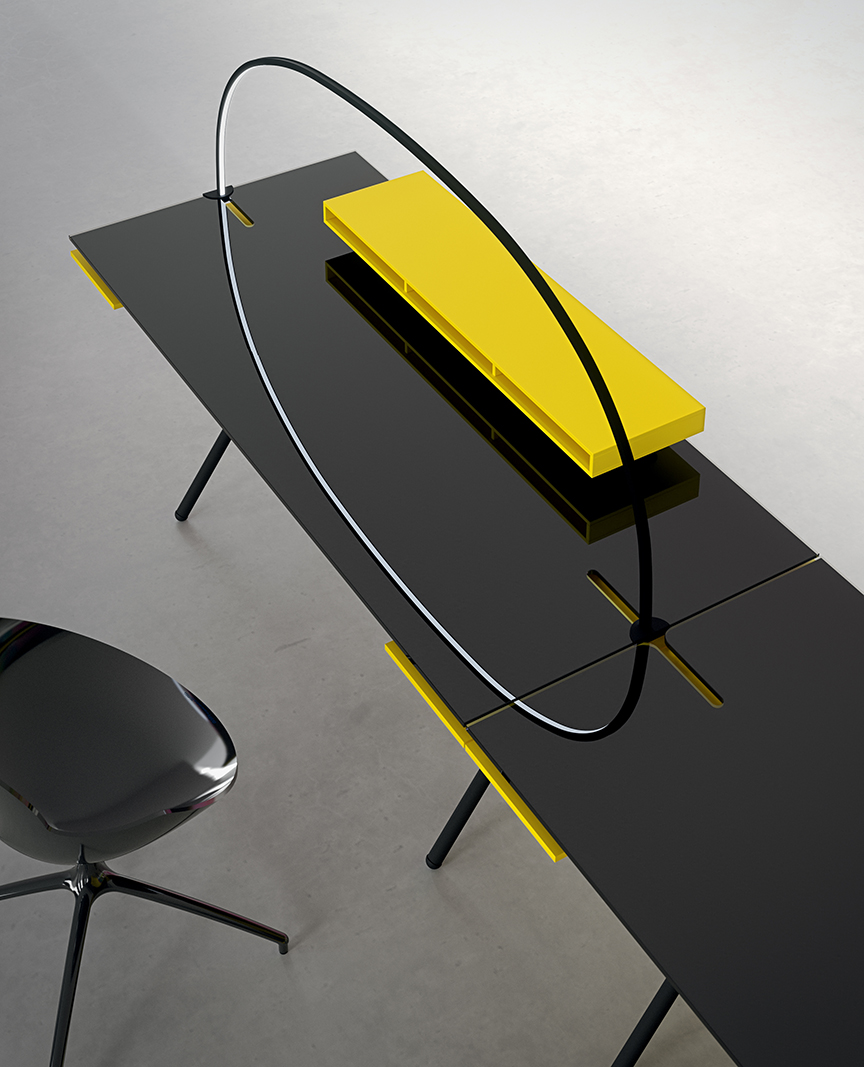
A new line of pop art furniture will brighten your office space.
A result of the extravagant, colorful and recognizable signature of designer Karim Rashid, Hook is the newest collection of modular furnishings by Newform Ufficio designed to instill positivity in the workplace.
“The office space should be comfortable and give inspiration like home, only with less distraction,” says Rashid. “An office should give a sense of freedom, personalization and sharing at the same time.” To reflect these ideals, Rashid’s collection incorporates touches of color, pop art work and simple divisions that create a private environment in line with the parameters of the common work space, making small workrooms obsolete.
The desks are the nerve center of the collection around which all the elements are developed. Each desk can be customized in terms of finishes and colors, and can also include a second, entire or shelf-sized top to store files, small books and/or hide cables. Under the worktop it is possible to insert a second, entire or shelf-sized top, to place diaries, documents or files, but the space also useful for managing and hiding cables. There are also drawers, special modules to insert hard drives, shelf systems and small load bearing shelves to replace thin metal legs. To free the tables from any unnecessary clutter, Rashid and Newform Ufficio have created LED lamps that spread a pleasant ambient light of the entire length of the desk.
To create workstations made up of several desks, a series of translucent screens and side panels allow both privacy and collaboration, as well as open up the space between workspaces. “I believe that the fluid, clean and bright spaces promote an active working life and that an office of this kind will lead to a better and more gritty work in return. My collection for Newform Ufficio embodies this spirit,” Rashid adds.
“Design has been the cultural shaper of our world from the start,” he notes. “We have designed systems, cities and commodities…. Now design is not about solving problems, but about a rigorous beautification of our built environments. Design is about the betterment of our lives poetically, aesthetically, experientially, sensorially, and emotionally.”
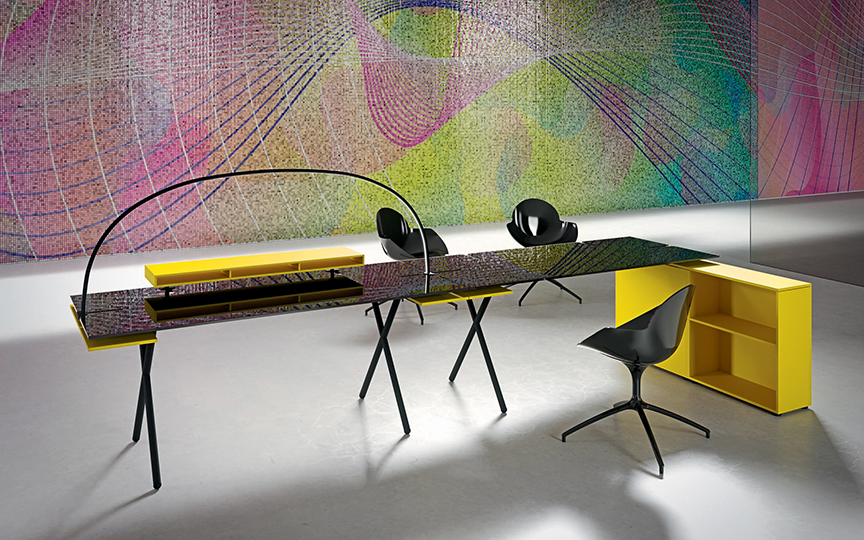
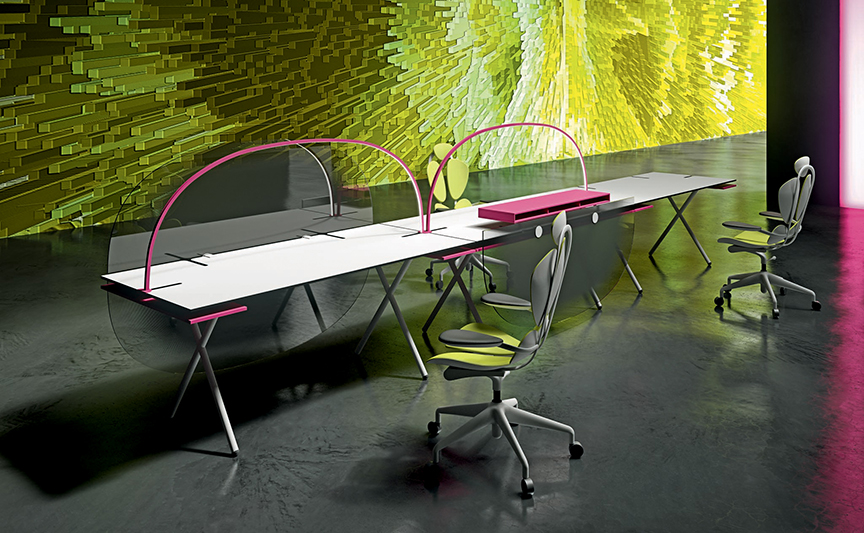
All photos courtesy Newform Ufficio.
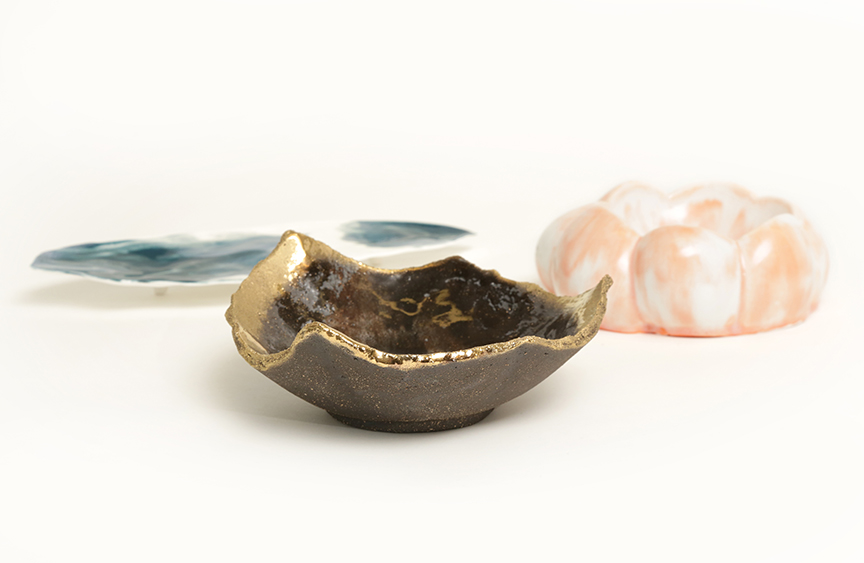
All photos courtesy NEFF.
Home appliance manufacturer NEFF, renowned for its passion for cooking and intuitive kitchen appliances, has partnered with UK-based ceramicist Reiko Kaneko to create a unique set of plates that enhance the flavor experience with a richer taste sensation.
The inspiration for this collection was taken from Professor Charles Spence’s groundbreaking research into the field of gastrophysics. Looking into various elements that contribute to a memorable eating experience, Spence has partnered with NEFF to uncover how the colour, shape, texture and even weight of crockery can intensify the flavour perception of food.
“Our brain plays tricks on us about what our taste buds are tasting,” says Spence. “There have been experiments showing that eating popcorn from a blue bowl tastes saltier than from a white bowl. Similarly, when it comes to shape, an asymmetric, angular plate can bring out the sourness and acidity of food much more than a round plate does.” Spence explains that working with NEFF to apply some of these principles to Reiko Kaneko’s plateware has been a really interesting challenge and opportunity to see the gastrophysics insights used as inspiration for plateware design.
The exclusive plate collection consists of three plates that have been specially designed to heighten the taste of each stage of a meal, for an ultimate dining experience. You can see the development and process behind each vessel below.
Reiko Kaneko, the ceramicist behind the creation of this set of plates, has been fascinated with the dimensions of taste since she discovered Spence’s work. “Playing with colour, shape and texture with the goal of ultimately influencing how diners will taste food has opened up a lot of creative avenues, which are reflected in my design,” she states.
Maria Beltrán, Head of Communication NEFF, says “Gastrophysics has opened our eyes towards a different world of ‘ingredients’ that come into play well after the food has been cooked: the elements that impact how food tastes when it’s being served. We hope that our plate collection inspires passionate foodies out there to be even more adventurous with their flavor experiments.”
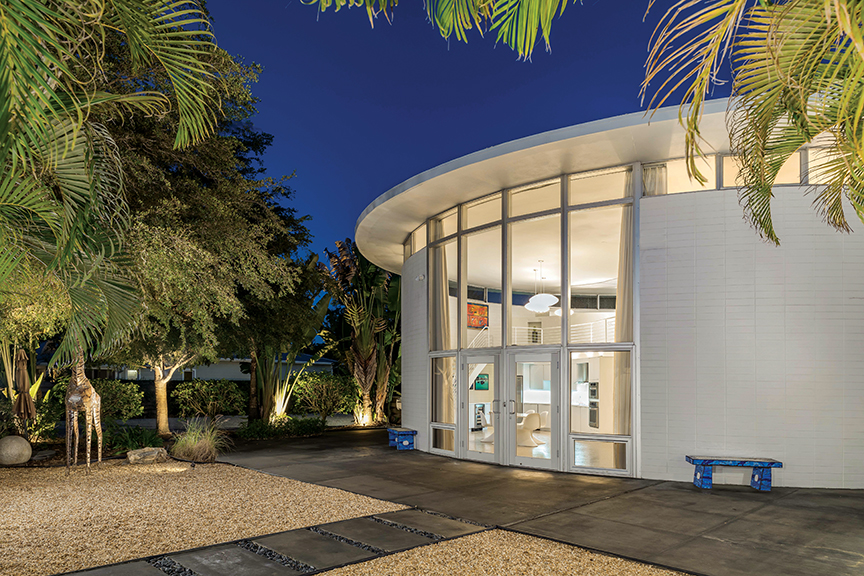
Photo by Rich Montalbano
Mid-Century Modern design came onto the scene before color television. But rather than appearing antiquated today, it inspires contemporary designers and homebuyers.
The popularity of Mid-Century Modern design continues to accelerate, confirmation that the masters who introduced the look in the ’40s and ’50s were visionary innovators. Decades later, the work of those architects, interior designers and furniture makers still appears fresh, and current expressions of modernism invariably build on the mid-century movement.
Sam Lubell, a leading authority on Mid-Century Modern design, whose books include Mid-Century Modern Travel Guide: West Coast USA and California Captured, believes the genre’s enduring appeal can be attributed to simple, elegant aesthetics, the success in reducing architecture to its most basic elements, and nostalgia. “Mid-Century Modern is a blend of technology, simplicity and a style that’s very ‘cool,’ for lack of a better word, enhancing people’s appreciation of it,” says Lubell. The writer suggests that vintage photographs from the era reveal how truly revolutionary Mid-Century Modern architects were. “Cars in the photos appear to have nothing to do with the houses. It’s hard to describe just how radical and ahead of their time they were,” he observes.
In the U.S., passions for Mid-Century Modern residential design burned first and most intensely in and around Los Angeles, responding to trends already underway in Europe, but not so elegantly applied to single-family residences. In a city where challenging established convention was not discouraged, disciples of Frank Lloyd Wright — pioneering architects Rudolph Schindler, Richard Neutra and John Lautner — transformed residential aesthetics and attitudes.
The genesis of Mid-Century Modernism may have occurred in the City of Angels, but today’s epicenter of the style is Palm Springs, the desert resort city 100 miles east of L.A. Practically the entire municipality is a living museum of mid-century design, and that signature aesthetic has become as much a tourist attraction as Palm Springs’ legendary golf, tennis and shopping.
Every February, the community celebrates its architectural legacy with Modernism Week, where architects, designers and collectors from around the world draw inspiration from home tours, seminars, film screenings, and receptions in famous settings that include not just residences, but Mid-Century Modern hotels and restaurants.
Lisa Vossler Smith, who served as a volunteer for Modernism Week when it debuted in 2006 and was named executive director five years ago, reports the 2018 edition drew 126,000 people from 15 countries, more than double the attendance in 2015. She has observed an ever-increasing commitment by local residents to embrace their city’s architectural heritage and believes Modernism Week has profoundly influenced preservation efforts in Palm Springs and beyond. “Our goal is to educate visitors, so they can take back what they’ve learned to their own communities,” says Vossler Smith, who actively supports similar events across the country.
Vossler Smith insists the fascination with Mid-Century Modern design is multigenerational, while conceding popular shows like Mad Men have contributed to the genre’s hip factor. “Clearly, there’s a sense of nostalgia for the baby boomer generation, but we find younger homebuyers are also attracted by the more simplistic, minimalistic lifestyle offered by these homes,” she says. “We’re now starting to explore new building projects informed by the mid-century design period,” says Modernism Week’s executive director, noting the influence of trailblazers such as Neutra and Schindler is evident in contemporary modern architecture.
While Vossler Smith admits Mid-Century Modernism is ideally suited to Southern California, she reports outstanding examples from the era are plentiful in places like Denver, Phoenix and Chicago. In Denver, real estate broker Adrian Kinney is a local expert on Mid-Century Modern homes, and his personal renovation of a Cliff May-designed residence reinforced his enthusiasm for quality design from that period. Finding some modernism too austere, Kinney was delighted to discover the warmth that many mid-century architects, like May, brought to their craft. “The more I learned, the more I wanted to educate everyone about what this modernism thing was all about!,” says the real estate professional.
“Buyers of Mid-Century Modern properties range from boomers to millennials, all wanting something different, functional and livable, with a sense of character,” says Kinney, who co-founded Denver’s own Modernism Show to draw attention to the Mile High City’s architectural assets. “After attending Palm Springs’ Modernism Week many times, I knew Denver needed to have one,” he says. Identifying more than 6,000 Mid-Century Modern homes in metro Denver, Kinney declares, “I want to showcase these to the world.”
Best known for its sugar-white beaches, the Gulf Coast city of Sarasota, Florida, shares a rich Mid-Century Modern heritage. Local broker Martie Lieberman of Premier Sotheby’s International Realty is recognized by both the real estate and architectural communities as an authority on the “Sarasota School of Architecture.”
Lieberman, who co-founded the Sarasota Architectural Foundation, is passionate about Mid-Century Modern homes and has made the sale of those properties her specialty. Observing that many houses from the Sarasota School elicit a sense of delight at first glance, she suggests the interiors are equally impactful. “You’ll see some of the most sophisticated uses of space and light, which most people have never experienced,” she insists.
Architects like Paul Rudolph and Victor Lundy created low-slung, glass-ensconced homes that were a dramatic departure from the prevailing Mediterranean style, explains Lieberman, noting they attracted idealistic young designers to Sarasota in the ’50s and ’60s. “They thought they would change the world with their new ideas, new materials and a new architecture,” she says. According to the niche broker, newcomers to Sarasota are quickly won over by the community’s architectural legacy, and Lieberman reports that significant Mid-Century Modern homes can command premiums of 15 to 35 percent.
A prefabricated home designed by legendary Mid-Century architect Cliff May, erected in 1955 in Denver.
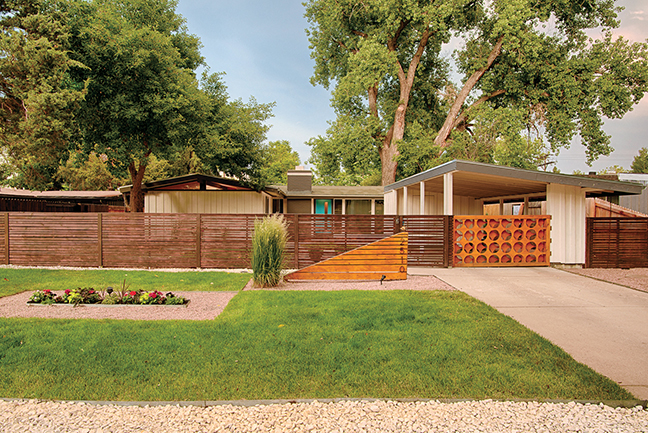
Real estate broker Adrian Kinney restored this 1955 Cliff May property in Denver, fueling his passion for mid-century design.
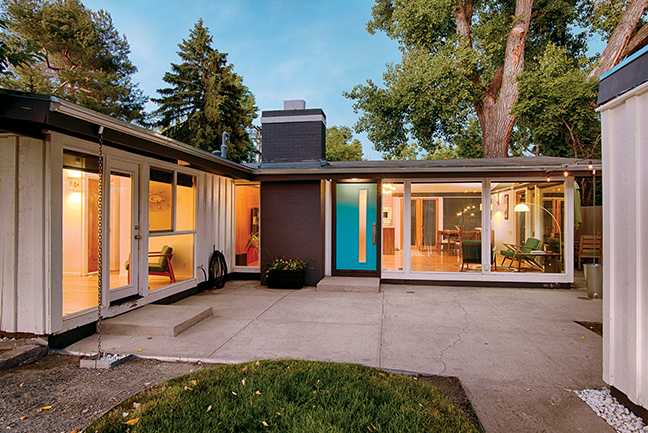
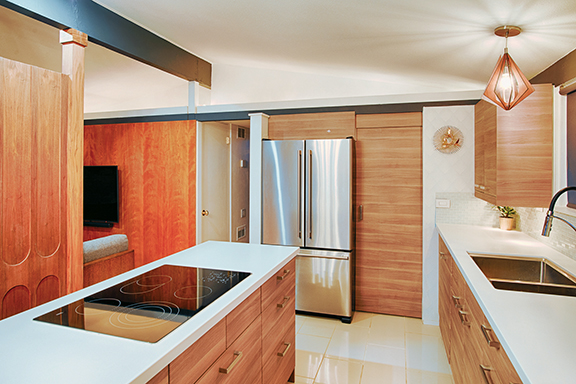
Photos by Atom Stevens
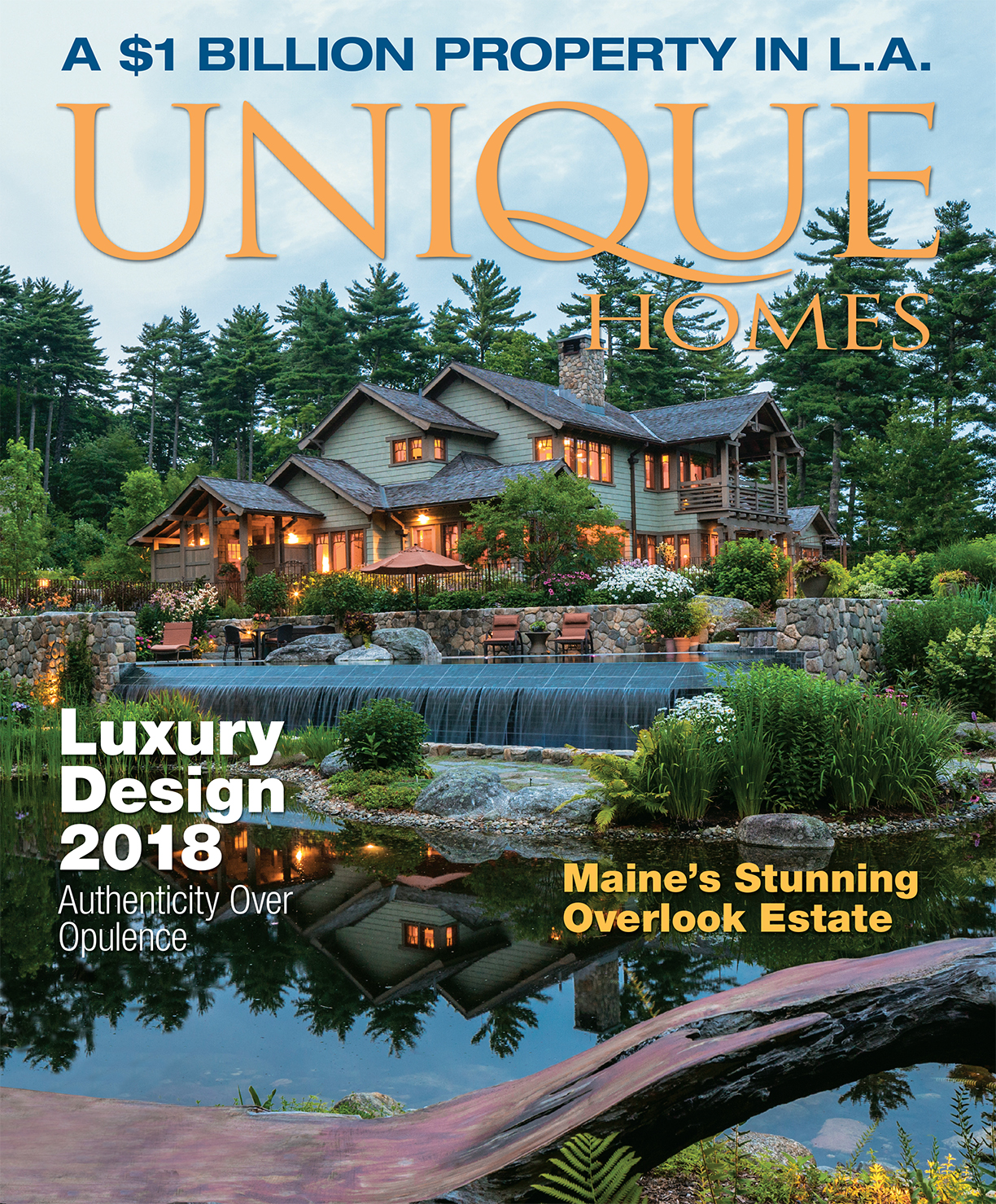
Vintage pieces add character and depth that cannot be imitated by modern mass-produced furniture. Embracing vintage trends in your home does not mean that you must abandon contemporary designs, however.
Many antiques fit well with today’s straight lines, bold colors and attention to detail. Whether you’re looking to make a statement with an ornate, attention-grabbing item or desire a subtle quaint aesthetic, vintage pieces can give a room personality and complexity unmatched by what can be found in the average furniture store.
If you are unsure how to go about incorporating timeless vintage pieces to your home’s decor, here are five tables with vintage charm that will give your home an extra dose of elegance:
Set of Four Vintage Rosewood & Inlaid Pearl Chinese Nesting Tables
$875
These handcrafted tables are made from solid rosewood and are engraved with genuine mother of pearl. You can store them together as a set or in separate rooms to create a cohesive aesthetic throughout your home.
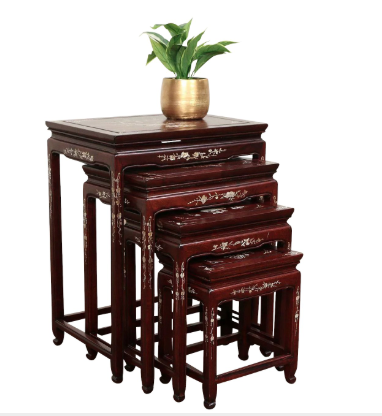
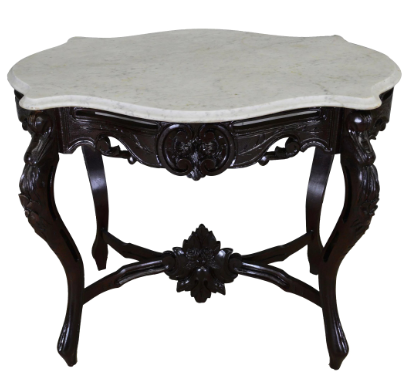
Victorian Marble Top Turtle Top Carved Table
$628
This sleek rococo-style table dates back to the 1890s. The simple white and gray grained marble top contrasts the carefully carved solid black mahogany base, perfect for the minimalist homeowner seeking to diversify their decor.
French Louis XV Style Nightstand
$895
Bring vintage trends into your bedroom with this mid 20th century nightstand, which features a serpentine shaped faux-marble top. This charming piece is a perfect fit for vintage enthusiasts looking to add a touch of femininity to their collection.
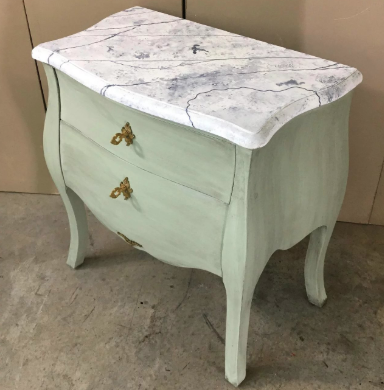
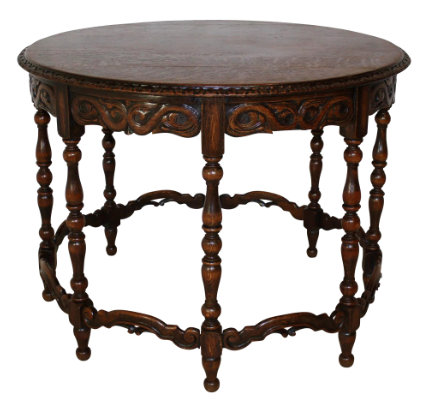
Round Oak Table
$995
Approximately 118 years old, this table features opposing scroll carvings that come together to form a floral design reminiscent of acanthus leaves. An ideal coffee table, this piece is stylishly supported by eight turned legs with ball feet.
Antique Chinese Hand Carved Rosewood Table with Marble Top
$1,995
This side table is between 100 and 150 years old, and features breathtaking carvings that make this elegant stand perfect for an upscale living room, library or bedroom.
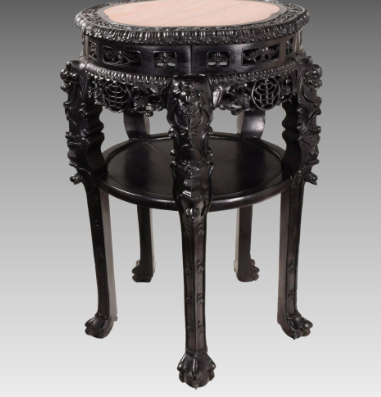
Photos courtesy of www.rubylane.com.
The new Ombré finish for kitchen and bath faucets from Kohler uses an innovative technique that melds two vibrant metal finishes together to render a subtle but striking transition from light to dark.
Kohler has taken a familiar product and, inspired by the worlds of fashion and modern design, created an uncommon showpiece that is unlike anything else on the market.

The Ombré Vibrant finish makes use of Kohler’s proprietary physical vapor deposition process, which bonds the finish and faucet together at the molecular level, to create an incredibly strong surface that is both scratch- and tarnish-resistant. The finish comes in two fabrications: Vibrant Rose Gold to Vibrant Polished Nickel, and Vibrant Titanium to Vibrant Rose Gold.
The Ombré Vibrant finish is available on a curated selection of Kohler plumbing products: Components and Sensate. Homeowners can express their personal taste by using faucets with this finish as an integral design component for their home décor.
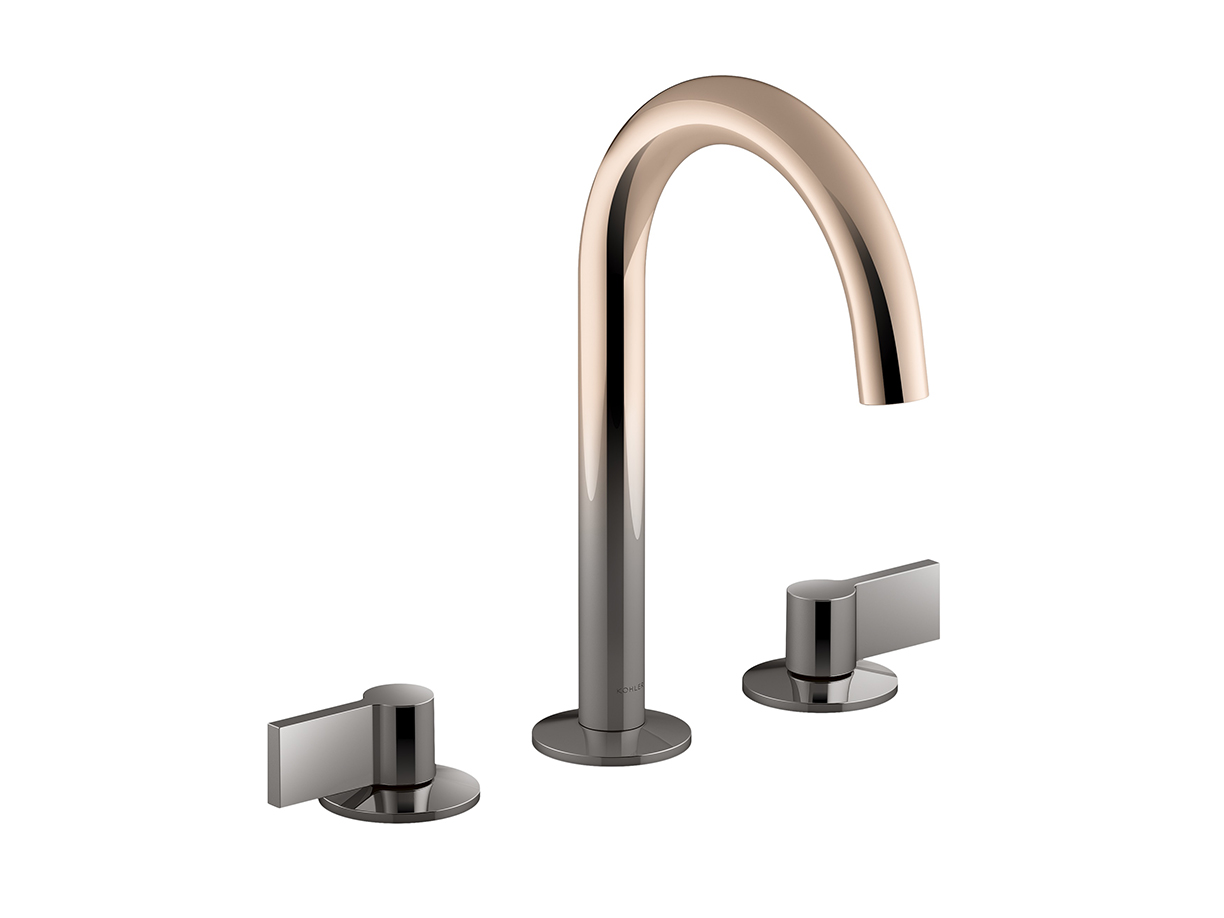
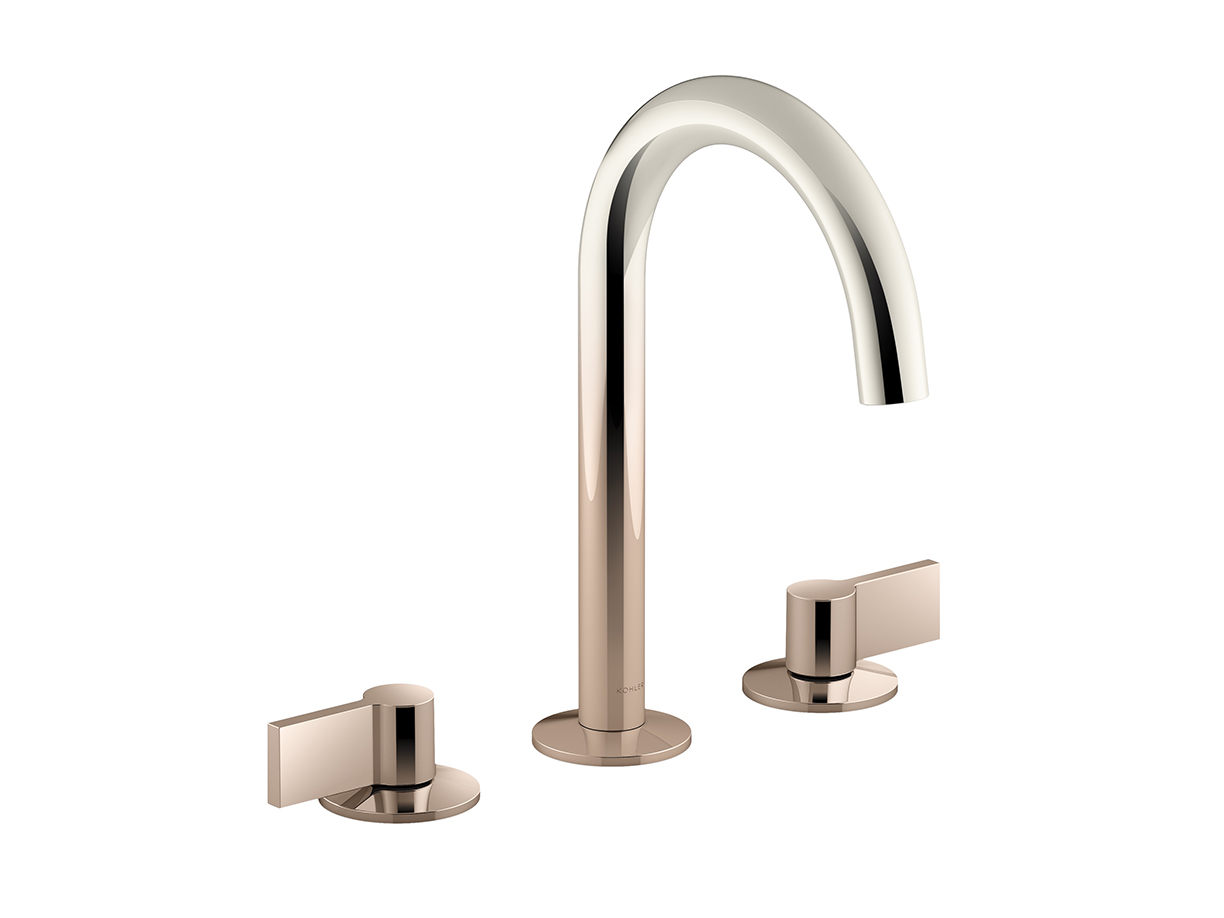
The word ombré, French for shadow or shade, has been seen on everything from haute couture gowns to celebrity hairstyles, and its ingenious use on what could be seen as an everyday product further establishes Kohler as the industry leader in finish innovation.
Photos courtesy of Jillian Rosone.
SMEG and Dolce & Gabbana — two prominent brands in the world of luxury — have come together and taken kitchen appliances to a whole new level.
Fun, vibrant, unique and sure to start a conversation are just a few ways to describe the new special collection, titled “Sicily is my love.” The line includes coffee makers, hand blenders, toasters, citrus juicers, electric kettles and mixers, and more.
Dolce & Gabbana and SMEG continue the journey that joins their artistic sensibilities to discover the colors and beauty of Sicily to celebrate the authentically ‘Made in Italy’ project under the shared standard of creativity, art, and design. A revolutionary collaboration that has created a new perception of home appliance, no longer mere products, but true works of art.

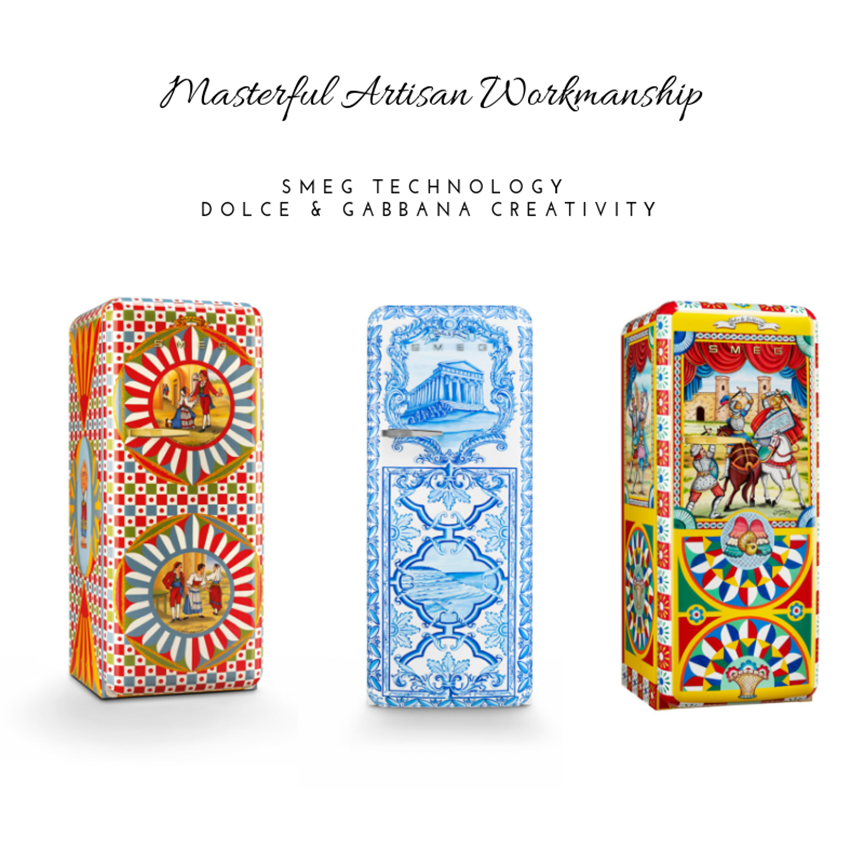
Photos courtesy of SMEG and Dolce & Gabbana
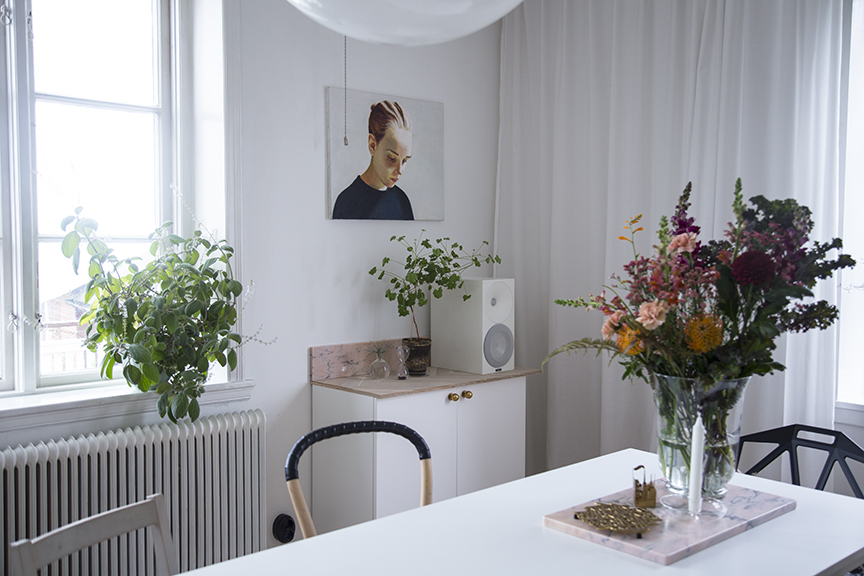
The Scandinavian design aesthetic continues to take the world by storm, from the cozy comfort of hygge to the inspiring minimalism of the trend itself. Design experts at Modern Dining Tables, as well as Niki Brantmark, blogger at My Scandinavian Home and author of “Lagom, The Swedish Art of Living a Balanced, Happy Life,” understand this aesthetic well, and how it plays into improves a room’s design and decor, particularly dining areas. With minimal furniture, soft color palettes and harmonious shapes and materials, the Scandinavian style is an excellent choice to soothe your dining room.
BACK TO BASICS
Wooden furniture and surfaces are the most common among the style, portraying a sense of simple elegance that is nature-based. Some of these surfaces and finishes include light grey marble or wood counters and kitchen equipment like wooden chopping boards, says Brantmark. This choice brings warmth into the home, as well as any other plant life added to the room that naturally revives the space.
To complement the natural wood touches, a soft color palette is also needed in order to create a “sleek, clean, organized look,” according to Brantmark. Designers at Modern Dining Tables also suggest more refined colors, such as mixing natural wood or darker metallics with white or rose gold. Alternatively, also suggested are black accent pieces, in order to give life to the room by making a modern contrast and letting the natural wood shine.
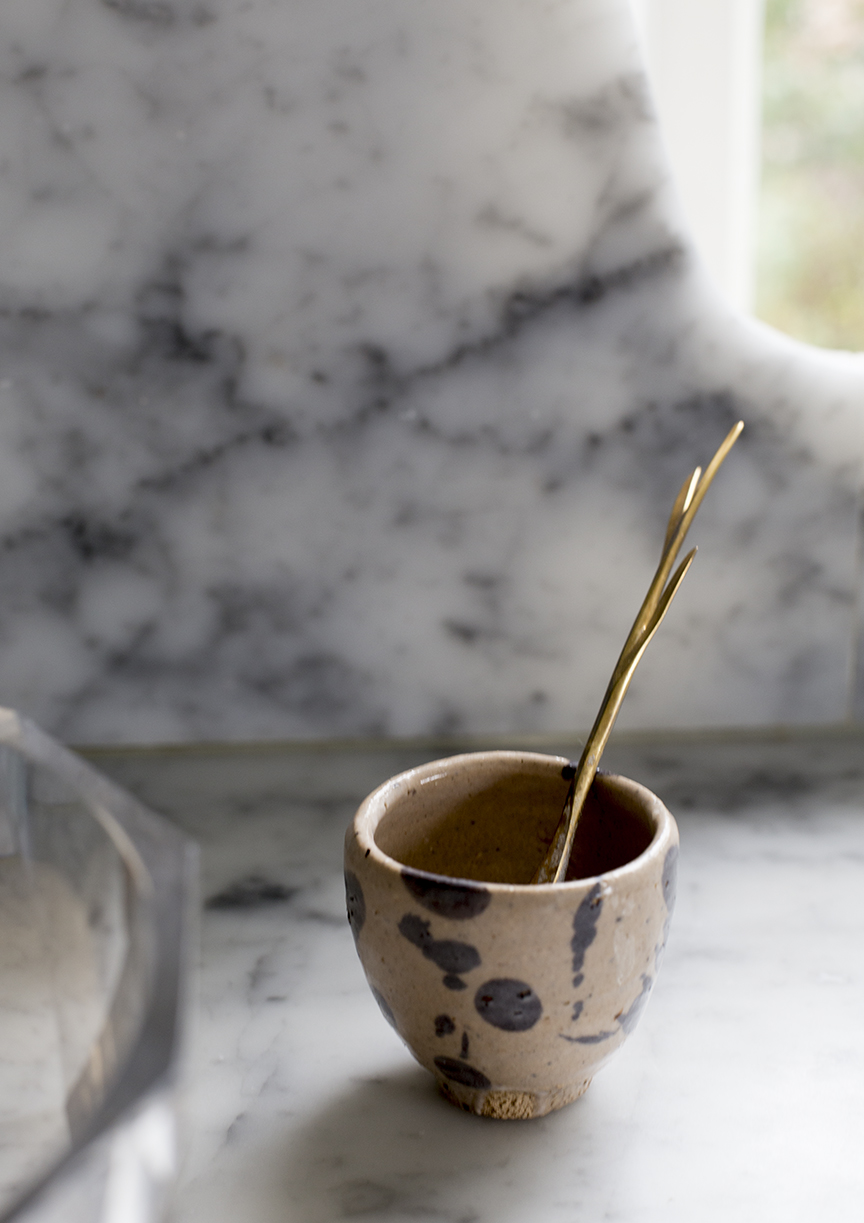
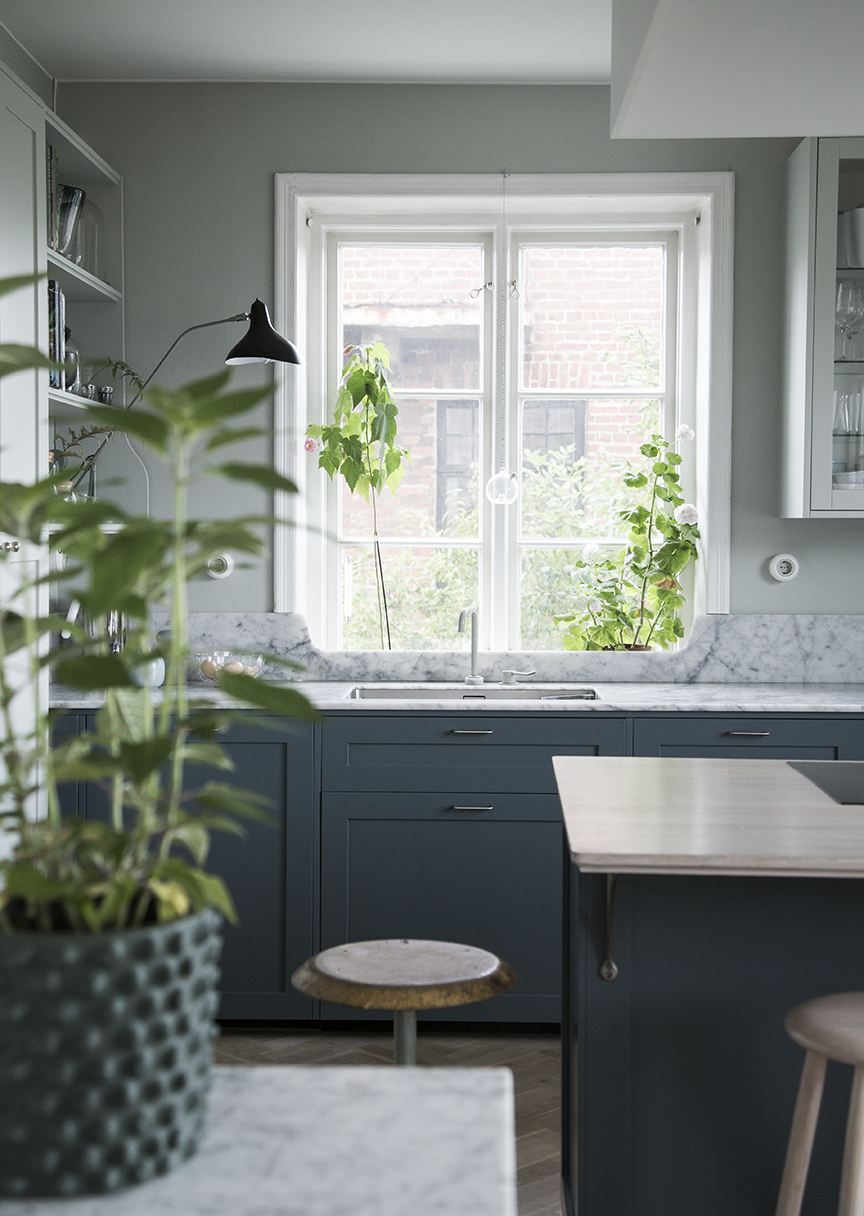
MINIMALISM AND ORGANIZATION
In order to fully commit to this style in your dining space, the layout of a Scandinavian kitchen often portrays a sense of minimalism, both in style and organization. To keep the look clean and streamlined, Brantmark suggests both open and closed storage options in the form of kitchen cabinets and drawers. “You need to be able to hide the clutter but ensure items you need regularly are at hand,” she adds.
Other ways to convey this sense of sophisticated simplicity can be shown in the furniture and lighting pieces displayed. Suggested by Modern Dining Tables, industrial-style lighting fixtures are highlighted examples, as “metal is never out of fashion” and gracefully complements other aspects of the aesthetic. In regards to furniture, large tables with simplistic, matching chairs work well in these spaces, as they are warm and inviting and further allow for a informal place for people to gather and socialize.
“I love that this look is calm and fresh yet has a balanced, warm and inviting feel about it too,” Brantmark remarks. “Kitchens are known as the ‘engine room’ of the house. It’s where people gather socially so it’s important people are drawn to the area and feel comfortable.

Photography by Niki Brantmark
Design by Tina Lekeberg
Interest and research in driverless and self-parking cars is rapidly growing, as are ideas for how this technology may impact housing development.
By Camilla McLaughlin
The race is on among car manufacturers, tech companies and cities to develop reliable self-driving vehicles and required innovative infrastructure in what is being characterized as the third transportation revolution, one that possibly could have as dramatic of an impact as the automobile. Personal vehicles are only one facet of this future vision. Ride hailing services, shared ownership of cars, autonomous shuttles and buses, and self-driving trucks are all part of the scenario, along with Wi-Fi-enabled infrastructure and roadways that could charge cars.
To illustrate how dramatic the transformation might be, futurist Jack Uldrich uses two photos of Fifth Avenue in Manhattan. In a shot from 1900, horse-drawn vehicles fill the roadway. Thirteen years later, only one horse-drawn vehicle is in evidence, and cars and trucks take up the entire street.
“The transportation revolution will be a game changer for most real estate sectors” is the prediction of Green Street Advisors in a report, The Transportation Revolution: The impact of ride-hailing and driverless vehicles on real estate, prepared for the Urban Land Institute’s fall 2017 meeting.
“Most experts agree that the automobile as we know it will be largely obsolete by 2030. In its place will be fleets of driverless cars that shuttle people safely and efficiently through our city streets. But it’s the broader impacts of this technology that are a game-changer for the future of our cities and the human experience. The opportunity is not only to create new places that accommodate driverless cars, but to reshape our existing cities and towns into the kind of amenity-rich, vibrant places that we all enjoy,” observed architect Andy Cohen, co-CEO of Gensler.
Although a vast array of regulatory and legal challenges need to be addressed, consumer acceptance is considered most pivotal to the broader adaption of autonomous vehicles (AVs). Right now, few consumers have tried self-driving cars. Experts agree acceptance will only come with knowledge and experience.
One analogy often used to illustrate current apprehensions about new technology is the elevator, which initially was considered an incredibly risky innovation. “People didn’t want to get into it. Today, you and I don’t give a second thought to jumping on an elevator, and it whisks us up a hundred stories of a skyscraper. I think that same thing is going to happen with autonomous vehicles. We’re just soon going to get in a car, press a button and it’ll take us to our destinations without our thinking of it,” says Uldrich, who says the impact of the elevator also gives insight into the effect of technology on luxury real estate. “Before the elevator, wealthy people lived on the ground floor, and they made the servants walk up the stairs. But with the invention of the elevator, the penthouse then become the most desirable space. And so, technology sort of changed behavior in a curious way.”
“For consumers, the tipping point for large-scale adoption will come when not owning a car makes more financial and logistical sense than traditional ownership. Car enthusiasts, the affluent, and rural households will continue to own cars as AVs evolve,” explains Rich Palacios Jr., head of research for John Burns Consulting. Still, real estate agents in cities with high levels of congestion such as Boston or San Francisco are beginning to hear comments from high-end clients that they are planning to reduce the number of vehicles they own.
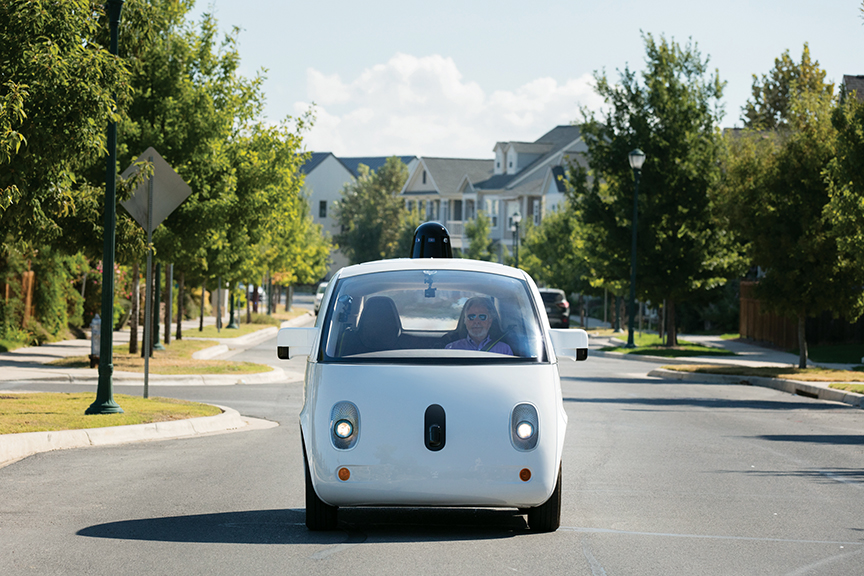
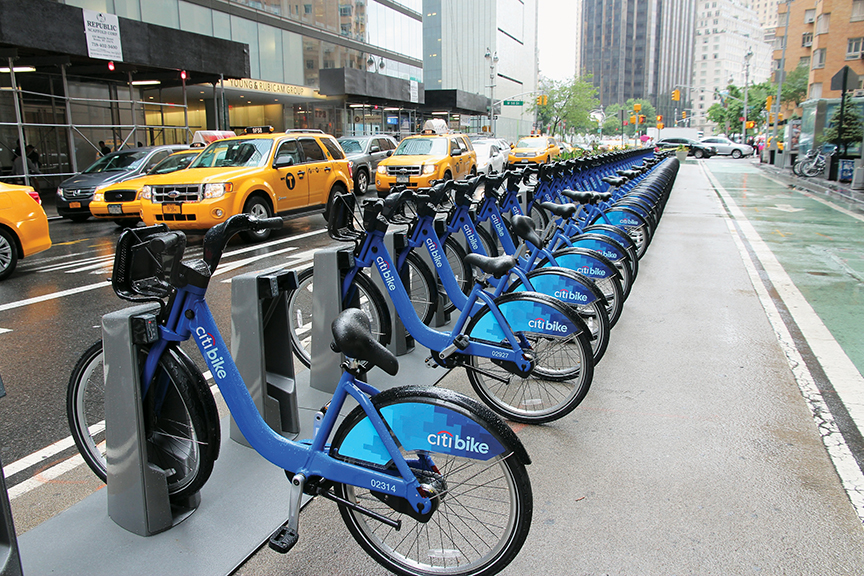
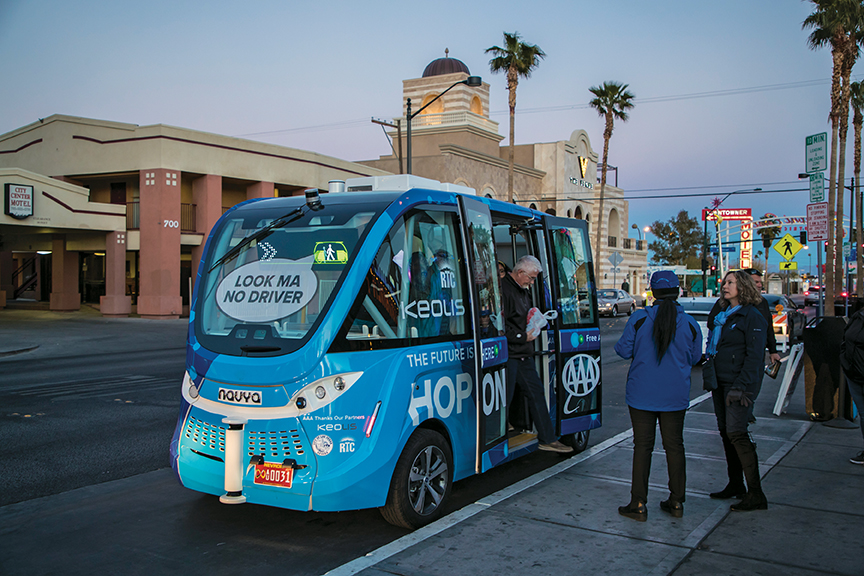
Even though many well-informed experts weigh in with varied opinions on potential transformations for real estate and housing, the only certainty is the change will be incremental, disruptive and far-reaching. “So, what impact will AVs and ride-sharing have on the housing market? We think a big one,” says Palacios. “A portion of the money once allotted to owning/renting a car should also free up for owning or renting a home.” As cars become more of a commodity, rather than a possession, costs such as fuel, maintenance and insurance will disappear along with loan/lease payments. “The boost to disposable income will be significant, once scaled,” says Palacios. Increases in productivity for individuals as well as industry are another expected result that will drive economic growth.
When the price of a parking space can exceed $300,000 or $400,000, even high-end consumers begin to examine the value of owning multiple vehicles. Conservative estimates suggest demand for parking could decline by 50 percent or more, freeing up extensive prime acreage. Already, in cities such as Chicago and Philadelphia, some former surface parking lots are being repurposed as mixed use or residential towers. Not only will the need for parking near prime buildings be eliminated, but overall, individual parking spaces will be smaller because autonomous vehicles do not require space to open and close doors when parked.
Some parking garages today are being designed with future adaptation to office or residential purposes in mind. Speaking at Trends 2018 sponsored by ULI Arizona, Veronica Siranosian, senior project manager with the global architecture and engineering planning firm AECOM Ventures, said they are recommending building new parking garages with flat floors and higher ceilings with the potential for HVAC and electrical.
Other changes she anticipates include mobility hubs that would incorporate bike share, drop off and pick up, automated shuttles and perhaps access to transit in one location. Additionally, building and street design will also have to consider added spaces for pick up and drop off.
Since most autonomous vehicles will be electric, the number of gas stations will also decline, further unlocking acres of what Palacios calls “prime real estate.” This reclaimed acreage will also improve the supply of homes in locations where inventories have historically been constrained, possibly dampening appreciation and enhancing affordability.
For a while, new construction in cities or close-in locations might impact interest in real estate in outlying suburbs, but in the long run demand for distant suburbs will reemerge as consumers realize they can use the time involved with longer commutes productively.
Overall, most expect to see a continued revival of cities. “What I am most excited about related to self-driving vehicles is society’s ability to envision better uses of the all-public space that is currently devoted to automobiles. In the future, I believe cities will have more green spaces, public parks, wider boulevards, and, perhaps, more affordable housing because we will be able to convert our garages and parking garages into fully functional living spaces,” says Uldrich.
“Get ready for more homes per acre, with the days of wide streets, massive driveways, and two-/three-car garages a thing of the past,” predicts Palacios. Higher density might be one potential outcome for residential real estate, but for consumers the result will be more livable square footage.


While fully autonomous driving seems many years away, planners and developers are already rethinking how new development needs to be planned. “We’re already seeing apartment developers shifting to zero parking. Innovative master-planned communities such as Florida’s new Babcock Ranch (eventually home to 50,000 residents) are already utilizing AV community shuttles, with the goal of having on-demand AVs that individual residents can use via smart-phone apps,” says Palacios.
For current homeowners, unused garage space will offer a range of opportunities to add amenities or create new uses from live/work options to multigenerational spaces.
For an aging population, new transportation options will be a game changer with the potential to alter where and how they live. Most projections envision a growing number staying in their existing homes rather than moving to assisted living.
The transportation revolution also makes a bullish case for the repair and remodel industry, and adaptation of homes for aging in place is only part of the push for renovations. The conversion of garages will also boost this real estate sector.
Two years ago, the idea of self-driving cars seemed more like science fiction than a near-term possibility. Today, despite the first traffic fatality from an AV, the push to develop this technology remains strong. Major automakers including General Motors and Ford as well as Waymo (a unit of Google’s Alphabet), Lyft and others continue to actively pursue the technology for both cars and trucks. A majority of automakers are moving toward semi-autonomous vehicles. GM, for example, has added hands-free cruise control to their Cadillac line along with vehicle-to-vehicle (V2V) communication with similarly equipped vehicles that alerts drivers to disabled vehicles, sudden stops or a crash ahead. It’s also a good example of how autonomous vehicles will eventually communicate with one another as well as with infrastructure. GM recently petitioned the federal government to begin testing cars without steering wheels and pedals.
The National Transportation Safety Board defines five levels of vehicle autonomy. Current vehicles fall into levels 2AV and 3AV. One anticipated transition to fully autonomous vehicles at Level 5 is dedicated travel lanes enabling them to trail closer together and communicate with each other and infrastructure. Hypothetically, this scenario would facilitate the movement of traffic, but some experts hazard that AVs will only increase congestion.
California and Arizona are on the forefront of the transportation revolution, incubating new technologies including potential use without a driver in the car. In late January, Waymo got a permit to operate as a Transportation Network Company in Arizona, which allows Waymo’s fleet of driverless minivans to pick up and drop off paying riders through a smartphone app or website. Other states including Texas, Ohio and Michigan are also proactively working on AVs.
Any look ahead also requires a look back at predictions that went wrong, including one notable projection, pegging the number of cellular phones at the end of the 20th century at just under a million. For driverless vehicles, estimates of the time frame for adoption might not hit the mark, but few would deny that transportation’s future will not involve steering wheels and brake pedals.
Wynwood, recently named one of America’s hippest neighborhoods by TripAdvisor, will get its first micro-style units with the addition Wynwood 25, where, “The Sky is the Limit.” The micro-style living is a growing trend in Miami, as it is aiding the transition from just a vacation hotspot to an authentic, urban center for young professionals.
Brooklyn-based interior designer, Meshberg Group, who are lauded for giving Brooklyn much of its design identity, was pegged to design Wynwood 25’s amenities and units with a Brooklyn touch. The project will feature a garden rooftop terrace with a pool, spa, grill, indoor/outdoor co-working spaces and green areas. Other building amenities will include a fitness and yoga center, coffee lounge and outdoor courtyard, and is slated for completion in summer of 2019.
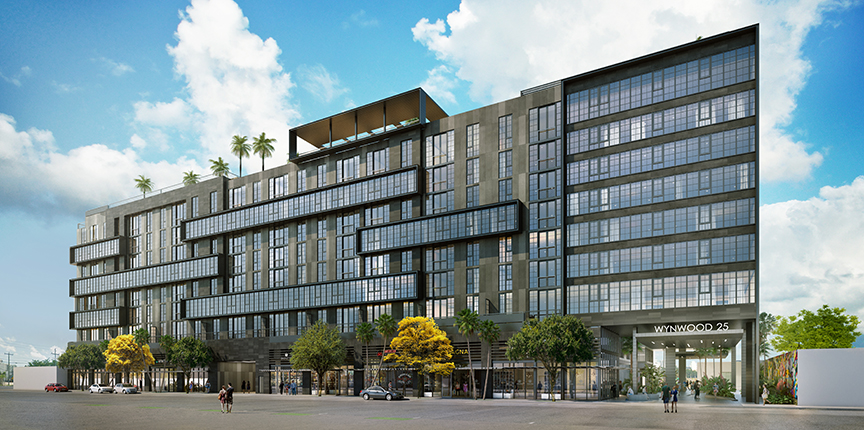
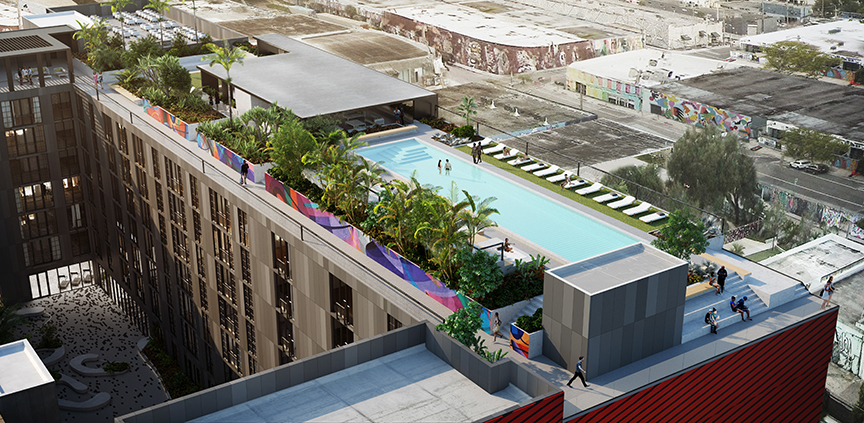
Micro-style units are becoming more and more popular in the Miami real estate market. Though Miami is currently pushing their luxury development, so much that it is now the sixth least-affordable major market in the U.S., according to a recent Demographia International Study, these micro-style units are providing another option for potential buyers. The majority of micro-unit dwellers are young professionals and first-time renters under 30, considering location the most important priority.
“The design for the micro-style units is for efficiency and a modern minimalist style, like smaller New York-style spaces, which are uncommon in the heart of Miami,” said Adam Meshberg from Meshberg Group, “For contextual visual elements, we used brick, exposed concrete and natural wood materials throughout the interior. This decision is shaped by our adaptive re-use experience in NYC where land is expensive and converting old buildings is the norm.
He continued, “Directly influenced by the latest in NYC, the programming of amenity spaces caters to the new way people live in urban areas. For instance, we created co-working indoor and outdoor spaces to encourage collaboration and comfort to work from home spaces, as well as a larger state of the art gym with on demand fitness studio,”
Wynwood 25 will be affordable and convenient, offering units ranging from 400–1,200 square feet for $1,600 to $1,750 per month. Rooms will be equipped with state-of-the-art kitchens and bathrooms, including access to the spectacular rooftop lounge, merging culture and recreation.
Renderings courtesy of Kobi Karp




